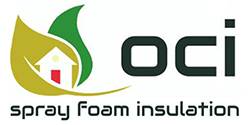Preparing your house for spray foam insulation is crucial to ensure a successful and effective insulation installation. Here are the general steps you should take:
- Clear the Area: Remove any obstacles or items that may obstruct the insulation process. Clear the work area of furniture, decorations, and other belongings. This includes items in attics, crawl spaces, and basements.
- Protect Surfaces: Cover surfaces that you don’t want the spray foam to adhere to. Use plastic sheeting or drop cloths to protect floors, windows, doors, and any other surfaces where overspray might occur.
- Seal Gaps and Cracks: Inspect your home for any gaps, cracks, or openings in walls, ceilings, and floors. Seal these gaps using appropriate materials like caulk or expanding foam. This helps prevent air leakage and ensures a more efficient insulation job.
- Repair Any Structural Issues: Before applying spray foam, address any structural issues such as water leaks, rot, or damage. Fixing these problems beforehand ensures a solid foundation for the insulation.
- Cover Electrical Boxes and Fixtures: Protect electrical boxes, outlets, and fixtures from the spray foam by covering them with plastic or tape. This prevents the foam from interfering with electrical components.
- Ventilation: Ensure proper ventilation in the area being insulated. Adequate ventilation helps in the curing process of the spray foam and minimizes the risk of harmful fumes.
- Temperature Considerations: Pay attention to the temperature conditions during the installation. Spray foam may have specific temperature requirements for optimal performance, so consult with the insulation professional or follow the product guidelines.
- Work with Professionals: While some homeowners may choose to install spray foam insulation themselves, it’s often recommended to hire professionals for this job. Professionals have the experience and equipment to ensure a proper and safe installation.
- Check Building Codes: Before starting any insulation project, check local building codes and regulations. Ensure that your insulation project complies with the requirements and standards in your area.
- Follow Manufacturer Guidelines: If you’re doing the insulation yourself, make sure to carefully read and follow the manufacturer’s guidelines for the specific spray foam product you are using. This includes information on application thickness, curing times, and safety precautions.
Remember that the specific steps might vary based on the type of spray foam insulation you are using and the unique characteristics of your home. Always consult with professionals or the product manufacturer for detailed guidance.

Recent Comments